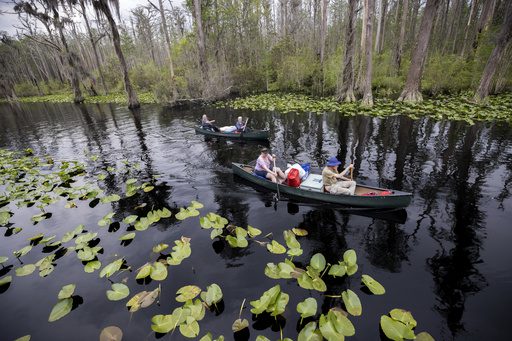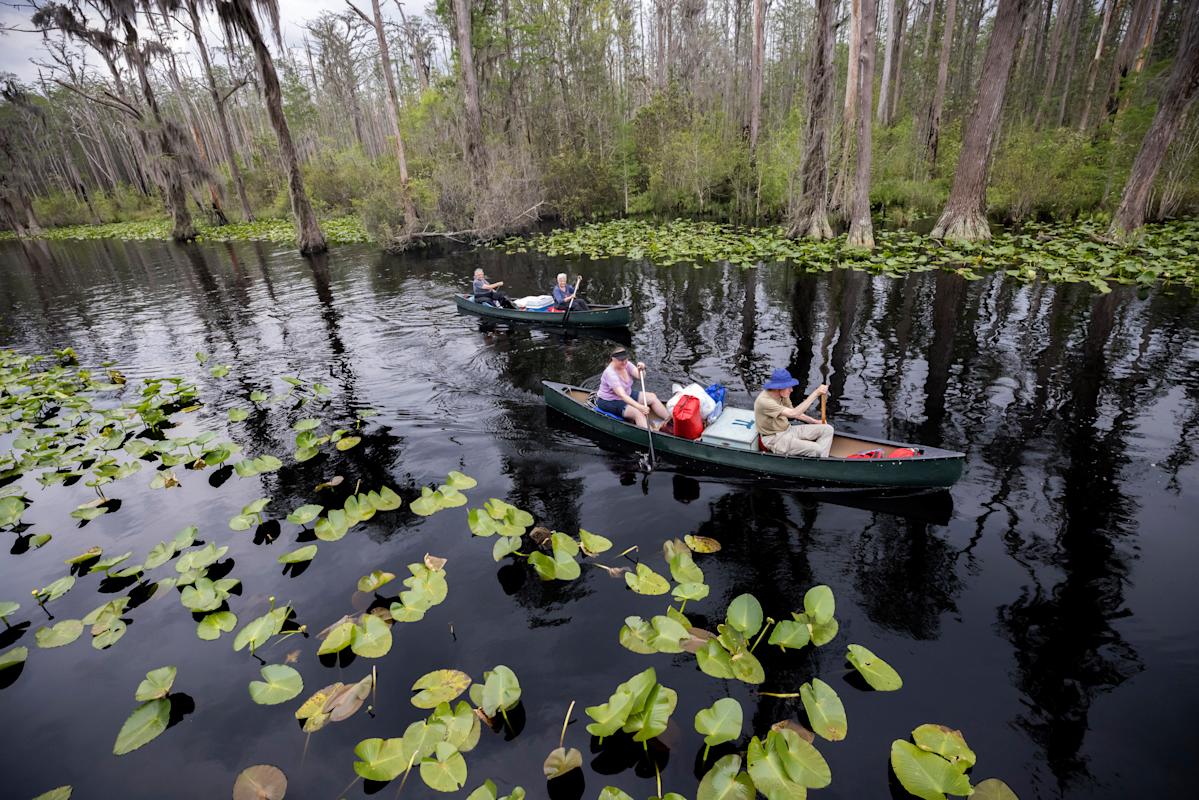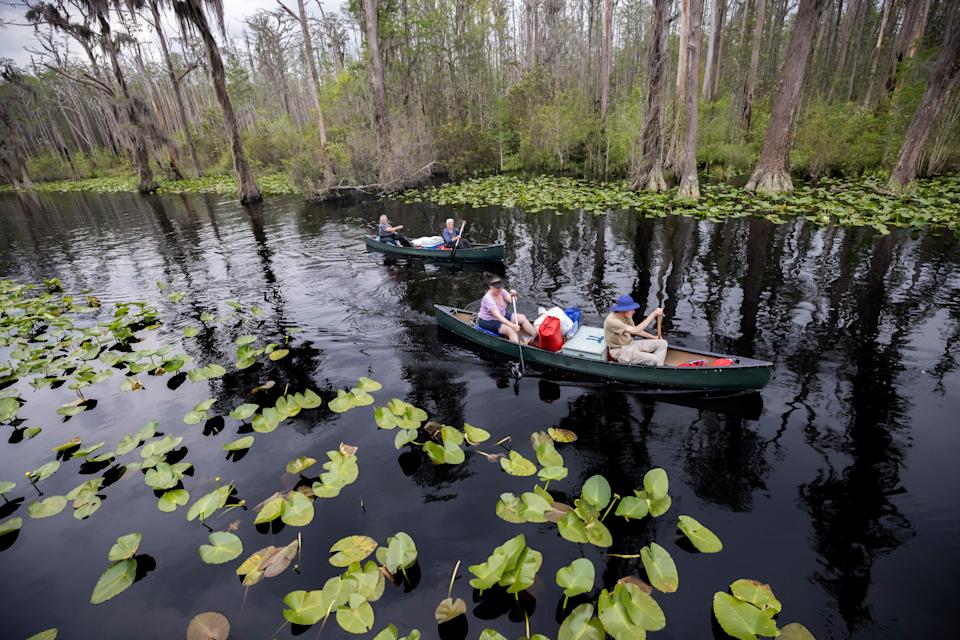## From the Oval Office to the Okefenokee: Can a Swamp Save America’s Future? Gamestanza readers, imagine a place where alligators bask in the sun, ancient cypress trees pierce the sky, and the air hums with the songs of unseen creatures. This isn’t a fantasy world, it’s the Okefenokee Swamp, a vast, vibrant ecosystem in Georgia. Now, an unlikely champion has emerged in its defense: a former Trump administration official. That’s right, the political arena is colliding with the natural world in a battle over the future of this unique and invaluable wilderness. Join us as we delve into the surprising alliance fighting for World Heritage status for the Okefenokee, and explore what this designation could mean for both the swamp and the fate of our planet.
World Heritage: A Prestigious Title

The designation of a UNESCO World Heritage Site is a globally recognized accolade bestowed upon places of exceptional cultural or natural significance. These sites are recognized for their “outstanding universal value” to humanity, embodying irreplaceable treasures that deserve protection and preservation for future generations.
UNESCO, the United Nations Educational, Scientific and Cultural Organization, sets rigorous criteria for World Heritage status. Sites must demonstrate outstanding universal value in one or more of the following categories:
- Representing a masterpiece of human creative genius;
- Exhibiting an important interchange of human values, over a span of time or within a cultural area of the world, on developments in architecture or technology, monumental arts, town-planning or landscape design;
- Bearing a unique or at least exceptional testimony to a cultural tradition or to a civilization which is living or which has disappeared;
- Being an outstanding example of a type of building, architectural or technological ensemble or landscape which illustrates (a) significant stage(s) in human history;
- Being an outstanding example of a traditional human settlement, land-use, or sea-use which is representative of a culture (or cultures), or human interaction with the environment especially when it has become vulnerable under the impact of irreversible change;
- Containing superlative natural phenomena or areas of exceptional natural beauty and aesthetic importance;
- Being outstanding examples representing major stages of earth’s history, including the record of life, significant on-going geological processes in the development of landforms, or significant geomorphic or physiographic features;
- Being outstanding examples representing significant on-going ecological and biological processes in the evolution and development of terrestrial, fresh water, coastal and marine ecosystems and communities of plants and animals;
- Containing the most important and significant natural habitats for in-situ conservation of biological diversity, including those containing threatened species of outstanding universal value from the point of view of science or conservation.
Achieving World Heritage status brings significant benefits to designated sites, including increased international recognition, enhanced tourism opportunities, and heightened conservation protection. It also serves as a powerful symbol of global commitment to preserving our planet’s invaluable heritage.

The Okefenokee Nomination
The Okefenokee National Wildlife Refuge, a sprawling expanse of blackwater swamp spanning over 400,000 acres in southeast Georgia, has been nominated for UNESCO World Heritage status. The nomination, initiated under the Biden administration, aims to recognize the refuge’s unique ecological importance and cultural significance.
The application, spearheaded by the Okefenokee Swamp Park in collaboration with the U.S. Fish and Wildlife Service, highlights the Okefenokee’s exceptional biodiversity, its role as a critical habitat for numerous endangered species, and its longstanding cultural importance to Native American tribes.
The nomination has garnered bipartisan support, with former President Trump’s former agriculture secretary, Sonny Perdue, voicing his endorsement. In a letter to Interior Secretary Doug Burgum, Perdue emphasized the economic benefits that World Heritage status could bring to the region, while also recognizing the refuge’s irreplaceable natural value.
“This designation is not a partisan issue,” Perdue wrote. “By supporting this effort, we can ensure the Okefenokee’s legacy as a natural wonder while fostering growth and prosperity for the communities surrounding it.”

Economic and Conservation Benefits
Achieving World Heritage status for the Okefenokee could bring a range of economic and conservation benefits.
Economic Advantages
Increased tourism: World Heritage designation often results in a surge in visitor numbers, boosting local economies through increased spending on accommodation, transportation, food, and souvenirs.
Enhanced brand recognition: The prestigious World Heritage label can significantly elevate the Okefenokee’s global profile, attracting investment and opportunities for sustainable development.
Job creation: The tourism and hospitality sectors could see a significant expansion, creating new jobs and supporting local businesses.

Conservation Implications
Strengthened protection: World Heritage status provides a robust framework for conservation, ensuring the Okefenokee’s long-term ecological integrity through international monitoring and support.
Increased funding: Designated sites often receive increased funding for conservation initiatives, research, and management programs.
Enhanced public awareness: The global spotlight on the Okefenokee can raise public awareness about the importance of wetland conservation and the threats they face.

Navigating Controversy
The nomination of the Okefenokee for World Heritage status has sparked a heated debate, primarily centered on the proposed mining operation by Twin Pines Minerals near the refuge.
The Mining Dilemma
Twin Pines Minerals seeks to extract minerals from a site just outside the Okefenokee’s boundaries. While the company asserts that its mining operations will be conducted responsibly and minimize environmental impact, opponents argue that the project poses a significant threat to the swamp’s delicate ecosystem.
Concerns include potential water contamination from mining activities, habitat disruption for wildlife, and increased sedimentation in the swamp’s waterways. Scientists warn that even small-scale mining operations can have irreversible consequences for such sensitive ecosystems.
Balancing Interests
The situation presents a complex dilemma, pitting economic development against environmental conservation. Supporters of the mining project argue that it will create jobs, generate revenue, and provide valuable resources. Opponents emphasize the irreplaceable value of the Okefenokee and the potential long-term damage from mining.
Finding a balance between these competing interests is crucial. It requires careful consideration of the potential impacts of mining, the long-term sustainability of both economic development and environmental protection, and the need to prioritize the preservation of this globally significant natural treasure.
A Call to Action
The fate of the Okefenokee and its bid for World Heritage status rests on a multi-faceted approach involving public opinion, advocacy groups, and government agencies.
Public engagement: Raising awareness about the importance of the Okefenokee and the threats it faces is vital. Public support can influence decision-making processes and encourage responsible stewardship of the swamp.
Advocacy efforts: Conservation organizations play a crucial role in advocating for the Okefenokee’s protection, conducting research, and raising public awareness. Their expertise and advocacy can help shape policies that prioritize conservation.
Government responsibility: The U.S. government has a critical role in ensuring the Okefenokee’s long-term protection. This includes supporting the World Heritage nomination, implementing strong environmental regulations, and enforcing existing conservation measures.
Collaborative approach: Finding sustainable solutions requires a collaborative effort involving all stakeholders. Engaging with local communities, businesses, scientists, and policymakers can foster dialogue, build consensus, and ensure the long-term well-being of the Okefenokee.
Conclusion
So, what does this mean for the Okefenokee Swamp and its future? This isn’t just about dusty history books and birdwatching anymore. It’s about recognizing the ecological and cultural treasure this swamp represents, a haven for biodiversity and a living testament to the power of nature. By advocating for World Heritage status, former Trump official Doug Parker and his supporters are drawing a line in the sand, pushing back against the threat of unchecked development and environmental degradation. They’re reminding us that preserving these irreplaceable ecosystems isn’t just the right thing to do, it’s crucial for the well-being of our planet and future generations. The swamp’s potential designation as a World Heritage site carries immense weight. It signifies global recognition of its unique value, attracting increased conservation efforts, tourism, and scientific research. This could be a game-changer for the Okefenokee, ensuring its protection and fostering a deeper appreciation for its beauty and ecological significance. But the fight isn’t over. Achieving World Heritage status requires navigating a complex bureaucratic process and overcoming potential opposition. The voices of those who understand the swamp’s irreplaceable value must be amplified, ensuring that this vital ecosystem receives the recognition and protection it deserves. The fate of the Okefenokee Swamp hangs in the balance, and the choices we make today will determine its legacy for centuries to come.
